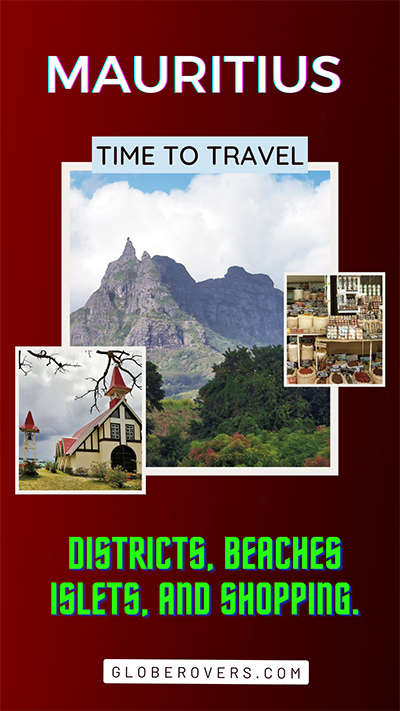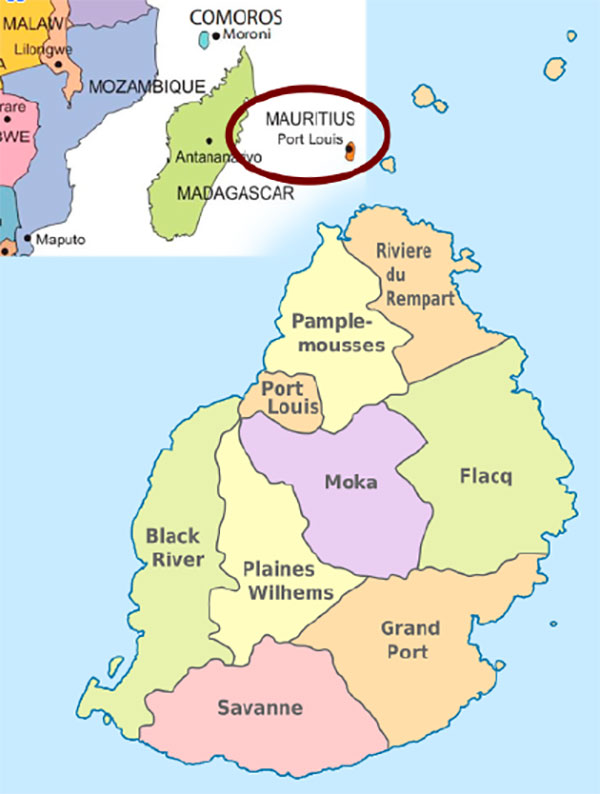
In our series, Island LIFE, Janet-Lynn Vorster, takes us 2,000 kilometres (1,243 mi) east of the South African coast to the tropical Indian Ocean island of Mauritius. In the 1st part of her article GlobeRovers Magazine of July 2019 she introduced us to life on the island and took us to many beautiful spots on the island, we went swimming with dolphins and heard stories about the shipwrecks scattered around the island. In this 2nd part she now takes us to all 9 districts of the island, its islets, markets, beaches, and more.
Photography by Janet-Lynn Vorster, Dominique De Saint Clair, Kim Tempest, and Lance Van Niekerk
Table of Contents
Welcome to the island of Mauritius
The July 2019 issue we featured part one on the beautiful island of Mauritius. We focused on the climate, life in Mauritius, the botanical gardens, Mauritius Tea Route, the sugar industry, and swam with the dolphins. We added tips for travellers and piqued your curiosity on a few more topics.
In this second part on Mauritius, we look at Mauritius, district by district, each with a few of its main attractions and beaches. We discover a few of the islets around Mauritius and give some ideas of where to shop and which bazaars to visit. We wrap it up with useful information on how to negotiate with the local taxi drivers.
“Mauritius was made first and then heaven.”
– Mark Twain
Mauritius boasts ten 18-hole and three 9-hole golf courses. It also boasts what is claimed to be the longest zipline in the world. So, while a peaceful island, it has enough to keep the sports enthusiasts and thrill seekers happy too.
The Districts of Mauritius
We travel anti-clockwise around Mauritius and first visit the Rivière du Rempart area in the north before we travel along the west coast to Port Louis and down to Moka, Plaines Wilhems and the Black River. From here we went to the far south to the Savanne District that is one of the most scenic, unspoilt and least populated areas on the island. We conclude our trip around the island in the areas of Grand Port and Flacq on the eastern side of Mauritius.
The North: Rivière du Rempart Area
The northern part of the island is popular for its languid, lazy, beach holidays. The sea is calm and beaches plentiful. For the more adventurous, it is great for snorkelling, sailing, diving, kitesurfing or visiting the many islands close to the main island. Yemaya Adventures offers sea kayaking, mountain biking, hiking and team building activities for all levels, with complete respect towards nature preservation.
Glass bottom boats are popular and are a fun way to observe and photograph the beautiful, colourful fish.
If rum is your drink of choice, pay a visit to Litchquor Ltd (Lychee and liqueur) in Petit Raffray, where the best rums on the island are sourced and outstanding premium spirits created.
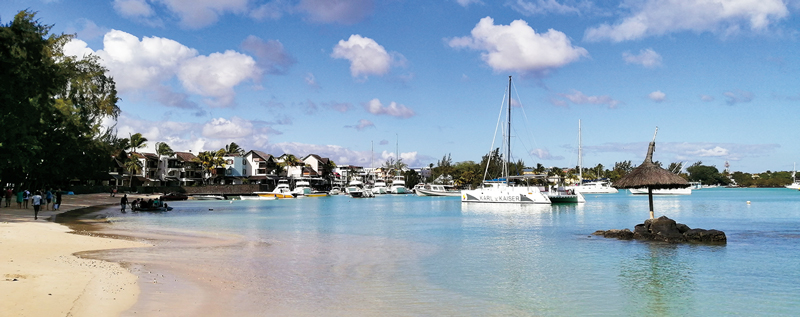
Château de Labourdonnais, surrounded by its beautiful orchards, was built between 1856 and 1859, and restored between 2006 and 2010. It is now a museum. Visit the museum to discover the nineteenth century Mauritian lifestyle and history, as well as the cuisine. I have it from a trustworthy source that Distillerie de Labourdonnais distils the best rum on the island!
In the area of Roches Noires, many caves and numerous lava tubes connect to the sea, with their cool freshwater springs where swimming and snorkelling among colourful fish can be experienced. Take water and a hat – both essential items in Mauritius.
In October during Diwali, take a night drive through Triolet to see the beautiful lights. Triolet is not only the longest village on the island, but also home to the oldest Hindu temple, the Maheswarnath Mandir. Please respect sacred places when visiting. Cover exposed skin well and remove all leather objects.
For vibrant night life, Grand Baie is the place to be.
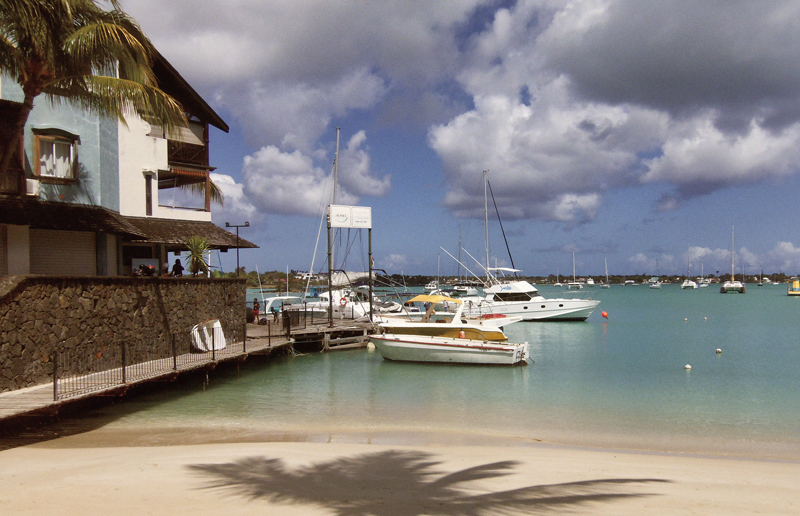
The West: Port Louis, Moka, Plaines Wilhems and Black River
Port Louis is a must-visit for its history, culture and shopping. This city, founded in 1735 by the French governor and pioneer Bertrand-François Mahé de La Bourdonnais, is the administrative and business capital of Mauritius.
Visit the central market, Champ de Mars (the oldest race course in the southern hemisphere), the Government House (one of the oldest buildings in Port Louis), Port Louis Theatre, the Citadel of Port Louis (Fort Adelaide), the Caudan Waterfront, the Rajiv Gandhi Centre and more.
Near Port Louis, is the Pieter Both, 820 metres high, with its distinctive crowning round rock which appears perilously balanced. Hike up these mountains close to Port Louis for the most incredible views!
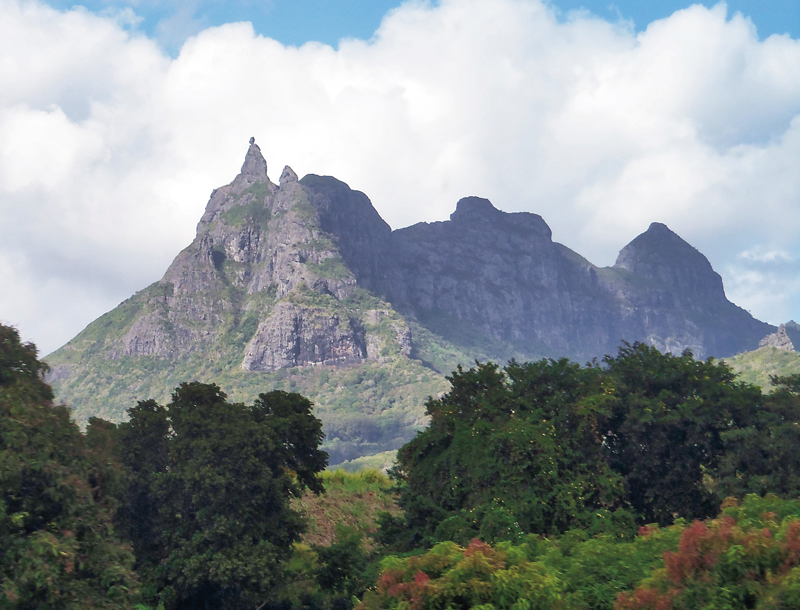
Ever heard of Green Island Rum? Synonymous for many with Mauritius, a visit to International Distillers (Mauritius) LTD in Plaine Lauzun, an industrial area located in Port Louis, will have friends and family green with envy.
The west and southwest coasts of Mauritius are the driest areas on the island. However, inland, in stark contrast, is the lush Black River Gorges National Park.
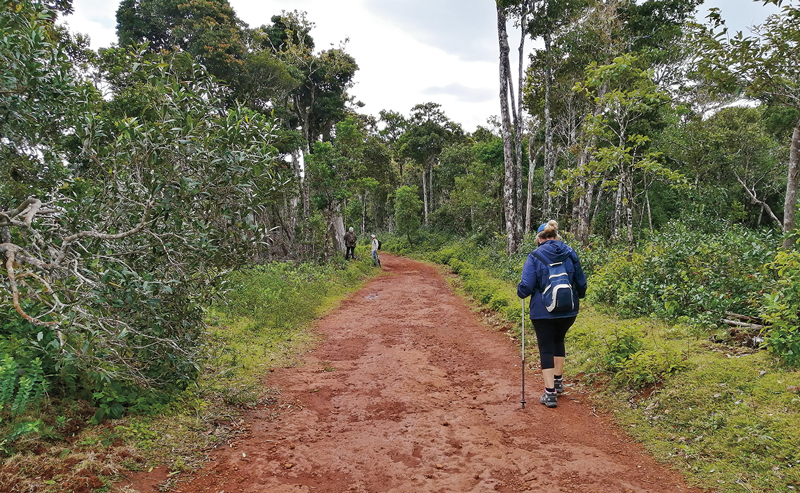
Spend the day visiting Casela and Gros Cailloux, both near Albion, between Port Louis and Flic en Flac. These parks have many adventurous activities from which to choose.
The much-photographed Pointe aux Caves lighthouse is perched on the cliffs at Albion. It stands 30 meters high and consists of four floors. Steep stairs lead to the dome and balcony.
A visit in the west is incomplete without visiting Chamarel village, known for its “seven-coloured earth”, charming restaurants, rum factory and the magnificent Chamarel Waterfall that cascades down for over 100 metres.

Plaines Wilhems is the most-populated district. This district has four Municipal Town Councils: Beau Bassin-Rose Hill, Quatre-Bornes, Vacoas and Curepipe, and they make up the heart of the island.
Curepipe is one of the coolest places on the island and a good place to spend the night if you suffer from the heat.
Visit Trou aux Cerfs, the most famous of many dormant volcanos on the island, as well as nearby forests, lakes and plantations. Domaine des Aubineaux, a colonial house built in 1872 which has since been converted into a museum dedicated to the history of Mauritian tea, is noteworthy.
There are many beautiful hikes through forests with waterfalls in this region. Hike in the Macchabée Forest past the Mare aux Joncs waterfall and walk around the Mare Longue reservoir, or cycle along these same trails. These areas are home to around 311 species of native and endemic flowering plants and nine species of birds that can only be found in Mauritius.
Always take a hat, water, food and medical supplies with you. It’s best to be accompanied by professional and certified mountain guides, and Emergency First Responders, such as Yanature. Then safely enjoy the flora, fauna and wildlife, with unbelievable scenery to photograph.

The oldest golf course is the 18-hole par 68 Gymkhana Golf Club in Vacoas-Phoenix. It is the 4th country club to have been established in the world, and Mauritius is only the third country in the world where golf was played in 1844 while under British rule.
Deep-sea fishing boats congregate in the bay of Black River. Charter a trip from here to go marlin or tuna fishing. The best months for deep-sea fishing are from November to April. Alternatively have a go at fly fishing or rock and surf angling with an expert fisherman.
The scenery in the southwest is dominated by the beautiful Black River mountain range where Piton de la Petite Rivière Noire (Little Black River Peak) is the highest mountain on the island at 828 m (2,717 ft).
Le Morne mountain on the coast, a UNESCO World Heritage site and commemorative landmark of the harsh slavery in Mauritius, is a well-recognised landmark. Local stories tell of slaves committing suicide by jumping off this mountain.
The Le Morne Brabant peninsula is “that spot” where most iconic local fishing legends originate. Le Morne is the southernmost town on the west coast. It has some of the most beautiful hotels and golf courses on the island. Long white sandy beaches complete the picture. It is a world-renowned spot for kitesurfing

The South: Savanne
The southern part of the island known as Savanne, is one of the most scenic, unspoilt and least populated areas. Due to its rugged topography, this region is newly developed compared to the rest of the island.
The southern coast of Mauritius features wild and stormy seas. The sight and sound of enormous waves crashing relentlessly against the rocks is in stark contrast to the gentle northern beaches with tiny waves gently lapping at the shoreline. Swimming in the sea in the south is not recommended. The beaches are nonetheless stunning.
The coast has characteristic black volcanic cliffs. The rest of the area is covered in dense green jungle as a result of high year-round humidity. Walk a little on the wild side along the beaches or cliff paths. Explore hidden sandy coves and waterfalls and visit traditional fishing villages.
To avoid the crowds, or to get the adrenalin flowing with something more adventurous, head to the south. The interior of Savanne has enough to keep you occupied and entertained for a few days. I really love this part of the island.
Grand Bassin (also known as Ganga Talao) is a lake situated southeast of Mare aux Vacoas, the largest reservoir in Mauritius. It lies in an extinct volcano crater on the B88 Grand Basin Road in a secluded mountain area about 550 m above sea level.
The Hindus of Mauritius declared Grand Bassin a holy lake and believe the water in the lake connects to the waters of the holy Ganges of India. Grand Bassin is home to the large statues of Hindu goddess Durga and her lion, and Lord Shiva. Both statues are 33 meters tall, or 108 feet, and both these numbers have huge significance to mystics and adept initiates. The Hindu community undertakes an annual pilgrimage to honour Lord Shiva.
In March and April, stop and pick the delicious red and yellow guavas from the bushes that border the road near Grand Bassin.
Bassin Blanc, another well-known volcanic crater, is easily accessible from the B102 north of Chamouny. It is close to La Vallee Des Couleurs Nature Park.
The natural waterfalls at La Vallee Des Couleurs cascade into alluring pools. While at the park, walk the trails, drive the quads, walk on the wild side across the 350m-long Nepalese Bridge suspended high above lush tropical green forests, and get the adrenalin pumping. The 1.5 km zip line at La Valleee des Couleurs is thrilling.
If that zipline is not rip-roaring enough, try the 3.5 km zipline at Domaine de L’Etoile made up of a full set of seven ziplines. It is said (I don’t have the stomach for ziplines, so cannot give a first-hand account) that it is an unparalleled experience. Some websites claim it is the longest zipline in the world.
Souillac, a village close to the southernmost point of the island, is the capital of Savanne district.
However, the largest population in the south lives in Chemin Grenier. I visited Nishal, a yoga master and healer in Chemin Grenier, experienced his home cooking and tasted palm hearts for the first time in my life. From the roof of his home I had 365° views over the town, surrounding sugar cane fields, banana plantations and the ocean in the distance. I love the south.
Arguably, the tallest palm tree on the island is alongside the main road in Chemin Grenier.
Near Souillac, visit the Rochester Falls and the Robert-Edward Hart Museum. This little-known museum is dedicated to Robert-Edward Hart, Mauritian writer and poet, appreciated by both the French and the English. It was named “La Nef” by his friends.
The famous hairpin bend of Macondé is found on the Baie du Cap road. I climbed the stairs to the Macondé Viewpoint. This rocky point juts out into the sea and offers an exquisite view of the turquoise ocean and coastline below. The hairpin bend forms part of a beautiful scenic drive along the south coast through villages and sugar cane fields.
The East: Grand Port and Flacq
The eastern coast with its succession of beaches is undoubtedly one of the island’s most beautiful coastlines set alongside emerald lagoons. Belle Mare beach is the main attraction.
Here luxurious hotels are in stark contrast with authentic villages. The east coast is exposed to the constant southeast trade winds, which reminded me a little of Cape Town – my home city.
Flacq is a district in the east of Mauritius. It is the largest of the nine districts, having an area of 297.9 km², and is home to the second largest number of inhabitants. Bel Air, slightly inland, has the most inhabitants at 17,000.
Mahebourg, one of the main fishing villages on the island, lies on the shores of the immense bay of Grand Port. Founded in 1804 by the French Governor Charles Decaen, Mahebourg witnessed the only Napoleonic naval victory over the English in 1810. Mahebourg was also known for its slave market and has a painful history.
Located at the entrance of Mahebourg, Château de Robillard, a French colonial building from the eighteenth century, houses the National History Museum. Old maps, engravings, crockery, pirates’ swords and fragments of shipwrecks recount the rich maritime history of the island. The crown jewel of this fascinating museum is the bell recovered from the wreck of the St Géran.
The mountain-bike trail in the Bras d’Eau forest is open to the public. It winds its way through shady exotic forest before following an old railway line to the lava caves where the ruins of an old sugar factory can be discovered. Bring your own bike, or make a booking with an outdoor adventure company, or walk the trail if preferred. A special Milky Way observatory is found in the Bras d’Eau forest.
The East Road is far less travelled than coastal roads in the west and north. It meanders down from Grand River South East to Mahebourg along the coast, taking you through small agricultural and fishing villages. It is a delightful drive.
Under French occupation, 27 defence guns guarded access to the island at Devil’s Point (Pointe du Diable). Geomagnetic forces inside the mountain attract and move a compass dial in circles. Therefore, sailors sailing past this point named it Devil’s Point!
Le Souffleur’s 30m high geyser is spectacular at high tide on windy days. However, be willing to brave a deserted road flanked by black volcanic rock walls that meanders over a few private farms. Low vehicles should not attempt this. We drove by car, but it was not wet or rainy and we drove very slowly.
The longest river in Mauritius is the 34 km Grand River South-East. We stayed for a few days at Laguna Beach Hotel & Spa in Grand River, a perfect spot from which to charter a boat to the nearby waterfall and to Ile aux Cerfs.

Beaches in Paradise
For those who want to head to the beaches to relax, swim, or just stroll, here’s your guide to beach-hopping in Mauritius:
Beach-hopping in the North
Take a drive around the northern coast and go beach-hopping for the day. The beaches in the north are undoubtedly the best swimming beaches on the island. Discover your favourite.
I suggest starting on B36 (Route Côtière or Coastal Road) at Trou aux Biches. From here drive northwards to the beautiful long Mont Choisy Beach on B13. Get there in the early morning and take a nice, long walk.
Travel northwards. You will soon get to the Grand Baie Public Beach, where you will see many boats lying at anchor. “Street food” in caravans and food trailers along the main road is generally safe, affordable and delicious.
A little further, turn off to the left, and find La Cuvette Public Beach at the end of the road. This is a small but beautiful beach.
Heading back to the B36, turn left, and a short distance away you will arrive at Pereybere Public Beach. This is my personal favourite. In the vicinity are many places to eat, as well as Winners, a supermarket, should you wish to buy an assortment of goodies for a picnic lunch.
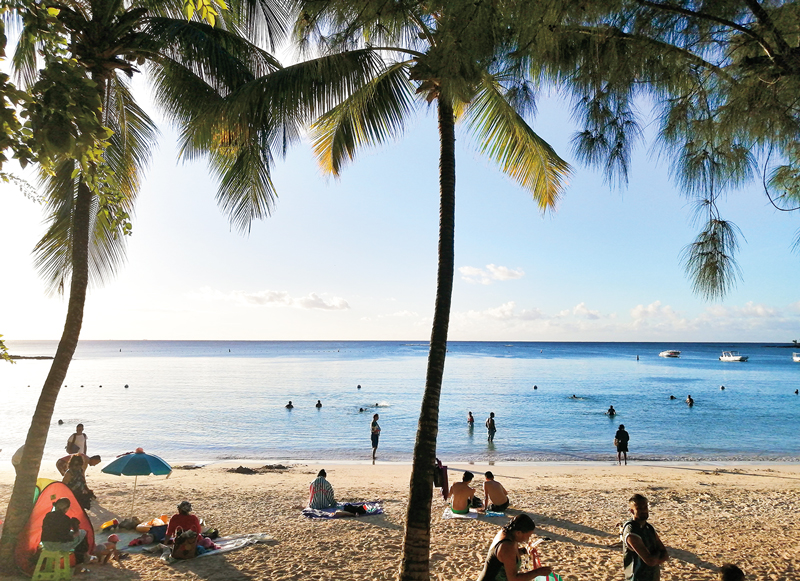
Next is Bain Boeuf Public Beach. On either side are beautiful private beaches to stroll along.
When leaving this beach to travel further north, you will pass a cemetery at Cap Malheureux. Park your car and walk up the small hill to the edge of the cliff. From there you will have the best photographic view of the islands to the north. You should count five of them.
Cap Malheureux has a small chapel: Notre Dame Auxiliatrice. It is commonly known as the Red Roof Chapel. Stop here for a visit and take stunning photos with the islands in the background. Cap Malheureux is the northernmost village on the island.
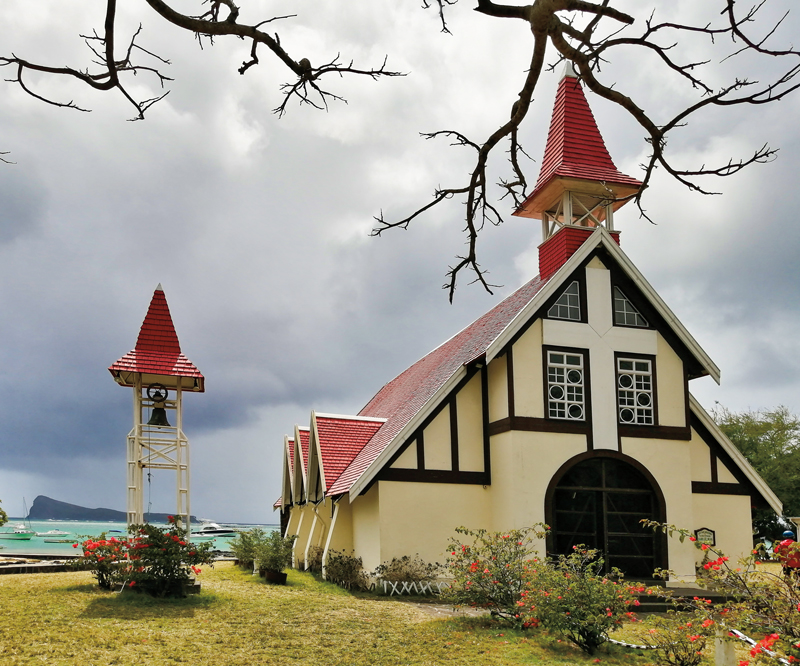
Anse La Raie Beach is next on the list of beaches.
From Anse La Raie Beach, as you drive through the little village of St François on your way to Grand Gaube, look out for Studio 44 on the right. It manufactures unique, hand-crafted glass tableware, corporate gifts and exquisite jewellery that will impress the fussiest recipient.
Next up is Butte à L’Herbe Public Beach, about half a mile down a gravel road. If you are looking for seclusion, look no further! I would not go there at night, though. Mauritius is rife with stray dogs, and they can get excited when running in packs at night.
From here, as you approach Grand Gaube, B13 becomes B44 and then B14, so don’t get lost!
P.G. Melville Public Beach on the other side of Grand Gaube is quiet, deserted, and my choice for peace and quiet and to avoid the gravel road at Butte à L’Herbe.
Baie aux Tortues, Pointe aux Piments, Pointe aux Biches and Le Goulet are beaches just north of Port Louis. While I have not visited them and not included them in my beach hopping spree, keep them in mind if you spend time in or near Port Louis.
Beach-hopping in the South
The south is the wildest, most mountainous and least frequented part of the island. Swimming in the sea in the south is not recommended as currents are strong and winds can be fierce.
Gris, the beach in Souillac, is described by poet Paul Jean Toulet as “full of terror and fatalism although not devoid of mildness”.
Riambel is adjacent to St Félix Beach. They are considered two of the most beautiful in the south; unspoilt and shaded by casuarina trees.
Baie Du Cap, La Prairie, Pointe d’Esny, Baie De Jacotet, Belle Ombre and Le Morne are other unpretentious beaches in the south. You will find the character of southern beaches very different to those in the north. They attract a completely different kind of visitor.
Riviere des Galets Beach, comprised of black, smooth stones, is a rarity and definitely not for bathing. The sound of the pebbles rolling as the waves come in and out is quite amazing.
After a long flight, La Cambuse is the closest beach to the airport. Relax under the shade trees before heading for your accommodation. Take a quick shallow dip if you must but be vigilant with children. The wild currents and wind are unpredictable.
Beach-hopping in the East
The climate on the eastern coast is more temperate than the north and west coasts of the island. The light breeze makes it cooler. This is valuable advice if you are booking accommodation in the hot summer months.
The beaches in the east are rare but striking.
Belle Mare has a beautiful long white sandy beach and is the setting for some of the best hotels in Mauritius. Belle Mare is ideal for diving.
Trou d’Eau Douce, Poste Lafayette, Palmar, Pointe de Flacq and Roches Noires are all beaches worth visiting. Roches Noires is reputed to be an excellent place for fishing, kitesurfing and windsurfing.
Bras d’Eau is a pristine beach. From the public beach you can see both the sunrise and the sunset – unique indeed.
Beaches and Surfing in the West
To relax on the beach, swim, snorkel or chat to the locals, head to one of three beaches: Flic en Flac, Tamarin or La Preneuse. Flic en Flac Public Beach is very popular. Tamarin with its browner sand (due to the river mouth) and La Preneuse are a little further south.
Sable Noir is the closest beach to Port Louis. Balaclava Beach, also known as Victoria Beach or Oberoi Beach, is located right next to the luxury hotel The Oberoi, one of the finest hotels in Mauritius.
Tamarin Bay is a popular surfing spot with its long left-hand reef break and 10-foot swells. This is where the beach babes and surfer dudes love to hang out – a “cool” place for the young ‘uns.
Surfing in the west is hands down the best on the island! Le Morne is the popular place for the more serious enthusiasts to kitesurf, windsurf and surf in the strong and steady southeast trade winds. Le Morne is world renowned for its “One Eye” surf spot with its fast-left tube.
Be careful of the strong currents at Le Morne as it is close to the wild seas in the south.
Islets of Mauritius
While there are many little islets around Mauritius, only a few really stood out for me.
Islets in the North
Six of the northern islets are very important due to their biodiversity, especially regarding seabirds, reptiles and remnant populations of coastal species and palm-rich forest.
Round Island, 22 km north, is unfortunately inaccessible to the public.
Snake Island has no snakes. The last indigenous snake species here became extinct shortly after European arrival. This barren rock is home to sooty terns, brown noddy- and lesser noddy terns, as well as a scarce gecko and centipede. A friend said it so nicely: “Snake island has no snakes and is round, and Round Island is not round and has snakes”.
Gunner’s Quoin is shaped like a whale. Here you will find remnants of a sugar plantation set up by Dutch settlers.
Flat Island is at risk of submerging. There are several 19th-century graves in the cemetery on the island. People suffering from malaria and other diseases were quarantined on this island by the British. It also houses one of only two working lighthouses in Mauritius.
Gabriel Island is a sheltered shallow cove of sand dune vegetation and Baume de l’Ile Plate (this is the only place that this plant grows). Spend a day here. Snorkel, dive and have lunch on a catamaran.
Pigeon Rock National Park is a volcanic plug that rises vertically out of the sea. It is a haven for seabirds. Scuba dive around this rock with its proliferation of sharks, particularly from November to April.
Islet in the Northeast
Ile d’Ambre is close to the mainland off the northeast coast. Although decaying and neglected, it still has some remaining Latanier bleu and mangrove forests. Swim, visit the ruins, walk through the forest, relax and have lunch.
Islet in the East
Île aux Cerfs, probably the most-visited islet, is just off the east coast. It is considered a water sports paradise and has arguably the most attractive beaches. The island boasts a superb 18-hole golf course designed by famous golf champion Bernhard Langer.
Islet in the West
Ile aux Bénitiers, situated off the coast of La Gaulette (Southwest of Mauritius), is a large coral sand island which lies in a lagoon near Le Morne. It is perfectly safe to go swimming and snorkelling here. A boat trip to the island usually includes a barbeque and drinks on the island. For a truly magical experience, be sure to book a trip to Ile aux Bénitiers and swim with the dolphins!
Shopping in Mauritius
There is no shortage of places to shop. I will only mention those places that I personally visited as shopping is not my kind of therapy. Take cash to the bazaars and barter to ensure a fair price. Be aware and be vigilant.
The Central Market, in Port Louis
Marche de Flacq, in Centre de Flacq
Bazar de Grand Baie, in Grand Baie
Caudan Waterfront, in Port Louis
To buy groceries and other necessary items, I suggest Super U (there are three on the island) and Winners in Pereybere.
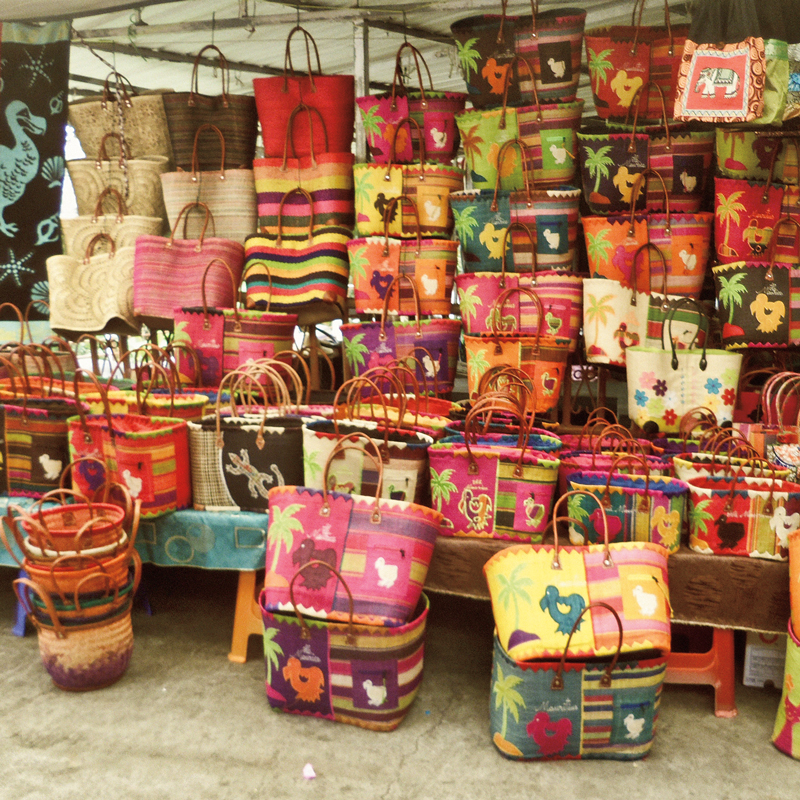
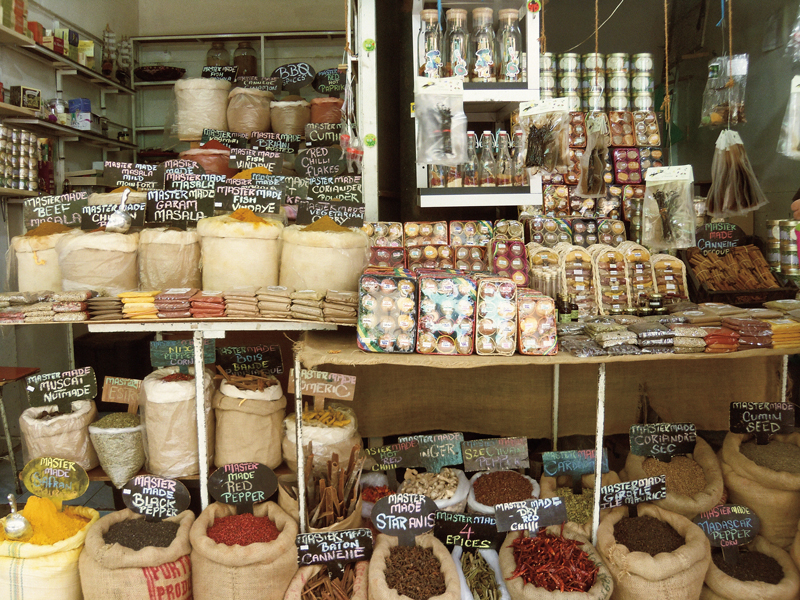
Thoughts & Recommendations
While in Mauritius, I spent a few days at both Merville Hotel in Grand Baie, and Laguna Beach Hotel & Spa. Both were on the beach, and both were fabulous.
Most of my holiday I spent house sitting in Pereybere where I learnt about cooking the Mauritian way.
I could honestly eat like that forever.
I realised that staying virtually on the beach had many advantages, including not having to get to and from the beach by taxi. From one place to another by taxi, even if only one kilometre away, costs a minimum of 150 rupees (one way). Buses are frequent and affordable but being far from a bus stop can be a drawback.
Without walking all the way to the nearest bus stop, stand alongside the road on the bus route and flail down a shared taxi. Offer to pay the same price as what the bus would have cost, no more, and within a few minutes one of the drivers will accept your offer.

However, they will not make a detour from the taxi’s normal route. To be taken to specific places or to be picked up and dropped off at your doorstep a private taxi must be arranged.
My suggestion is to stay within a comfortable walking distance from the beach, bus stop, shops and restaurants. I would personally rather spend more on accommodation, and less on transport.
Public beaches are quieter than private beaches during the week. However, locals flock to the public beaches on weekends.
Locals can be quite territorial regarding “their” beaches over weekends, so allow them time with their families. Locals are conservative, so expect a few frowns if you appear on public beaches in your revealing swimwear over weekends.
Both respect and planning will make the visit more pleasurable for all.
Some public beaches adjoin private beaches which “belong” to hotels. Walking from a public beach onto an adjoining private beach is permitted. However, do not venture above the high tide mark, as this is privately-owned property.
I love Mauritius! For now, I will fly there in my dreams until I can visit again.
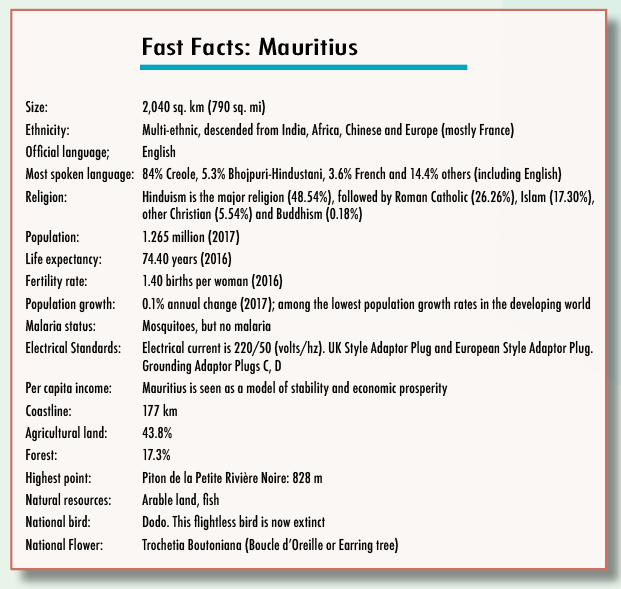
☛ Read more: Mauritius island: Gardens, tea, sugar, dolphins, and shipwrecks
☛ Read more: Shipwrecks and wreck-diving off Mauritius island

